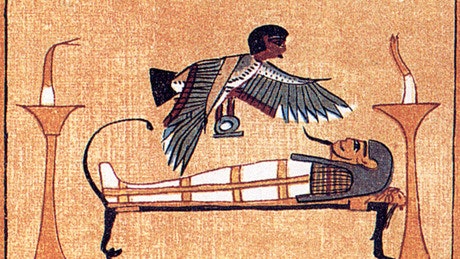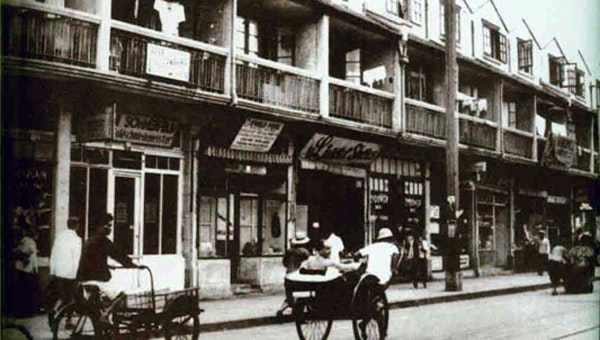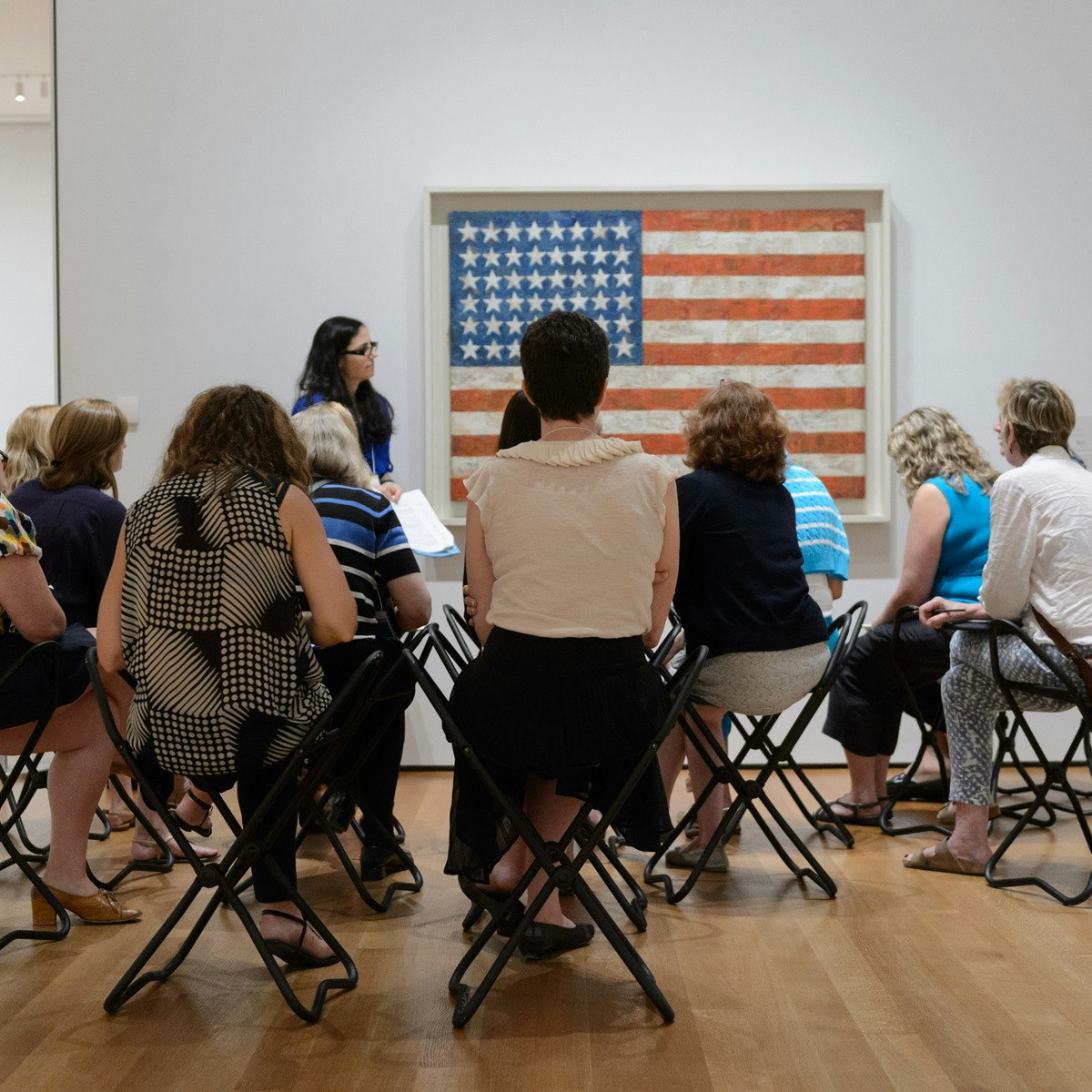Back to Courses









Arts And Humanities Courses - Page 14
Showing results 131-140 of 464

Soul Beliefs: Causes and Consequences - Unit 3: How Does It All End?
Throughout history, the vast majority of people around the globe have believed they have, however defined, a “soul.” While the question of whether the soul exists cannot be answered by science, what we can study are the causes and consequences of various beliefs about the soul and its prospects of surviving the death of the body. Why are soul and afterlife beliefs so common in human history? Are there adaptive advantages to assuming souls exist? Are there brain structures that have been shaped by environmental pressures that provide the foundation of body/mind dualism that is such a prominent feature of many religions? How do these beliefs shape the worldviews of different cultures and our collective lives? What is the role of competing afterlife beliefs in religion, science, politics, and war? This course explores several facets of this relatively unexplored but profoundly important aspect of human thought and behavior.
The course consists mainly of 70 to 80 minute lectures, typically broken up into 3 segments, recorded from a course offered by Rutgers University School of Arts and Sciences. These videos include slides and some embedded video clips. Most lectures are accompanied by slides used during the lecture, also including recommended reading assignment which may provide additional opportunities to reflect on your studies.
Due to the lengthiness of this class and natural progression, the online course has been separated into 3 units, this is Unit 3.

Comic Books, Geek Culture, and the Fandom Imaginary
"Comic Books, Geek Culture, and the Fandom Imaginary" explores some of the conventional framings of “fandom” (from comic book obsessives to cosplayers) and the cultural histories that sustain it. It also explores the dark side of these dynamics, looking at what can happen when fandom turns toxic in pop culture spaces. You will continue to apply frameworks of self-reflection and close reading/analysis to the study of contemporary popular culture, and explore how those frameworks provide tools for understanding the self as much as our cultural surroundings. The course asks the fundamental question: how can what we love - what we read, what we watch, what we share - contribute to making the world a better place? Along the way, you’ll continue to develop your skills in honing and representing your fandom, specifically engaging in activities designed to help you find your fellow fans, help you find your people, and connect with them outside and beyond the course.
Course-Level Learning Outcomes
* Define and describe the dynamics of geek culture (fantasy, science fiction, comic books, graphic novels), as well as its relationships to fandom, popular culture, and digital media
* Apply critical self-reflection and close reading frameworks through analytical writing and creative expression
* Engage with pop culture and fandom communities by leveraging online platforms to make connections and synthesize learning
* Reflect on your personal relationship to geek culture (fantasy, science fiction, comic books, graphic novels), and how popular culture intersects with memory and nostalgia
Course 3 Skills:
* Analysis
* Self-Reflection
* Critical Thinking
* Communication
* Culture
* Close Reading

Miracles of Human Language: An Introduction to Linguistics
Everywhere, every day, everybody uses language. There is no human society, no matter how small or how isolated, which does not employ a language that is rich and diverse. This course introduces you to linguistics, featuring interviews with well-known linguists and with speakers of many different languages. Join us to explore the miracles of human language!
The Miracles of Human Language introduces you to the many-faceted study of languages, which has amazed humans since the beginning of history. Together with speakers of many other languages around the world, as well as with famous linguists such as Noam Chomsky and Adele Goldberg, you will learn to understand and analyse how your native tongue is at the same time similar and different from many other languages. You will learn the basic concepts of linguistics, get to know some of the key features of big and small languages and get insight into what linguists do.
This course gives an introduction into the study of languages, the field of linguistics. With the support of the basic linguistic terminology that is offered in the course, you will soon be able to comment both on variety between languages, as well as on a single language’s internal structure. Anyone who wishes to understand how languages work, and how they can give us insight into the human mind is very welcome to join.
The course is useful if you want to get a fairly quick introduction into linguistics, for instance because you are considering studying it further, or because you are interested in a neighbouring discipline such as psychology, computer science or anthropology. Furthermore, the course will help you develop analytical skills.
If you are curious to understand how language works and how it gives insight into the human mind, this course is definitely for you!

Jewish Diaspora in Modern China
Jewish Diaspora in China is a unique experience for world Jewry, as China is the only country in Far East that has had Jews living in its society for over 1,000 years. Documentary evidence shows that Jews started to live in China no later than the Tang Dynasty (618–907). The famous Kaifeng Jewish community, which was established in Kaifeng, the Chinese capital of the Song Dynasty (960-1279), is but a best-known example. However, the largest Jewish Diaspora in China appeared in modern times. In over 100 years, from the mid-19th century to the mid-20th century, about 40,000 Jews came to China and lived in newly-established major port cities such as Hong Kong, Shanghai, Tianjin, and Harbin. Jewish communities composed of these Jews became an essential part of the economic and social life of those modern Chinese cities. What brought such a large number of Jews to China? Where did these people come from? How did they arrive? Were they all in China at the same time, and were there any differences among them? What happened to them after they arrived? Where are they now? The story of Jews in modern China is certainly a fascinating and up-lifting one. This course will examine these questions and more.

Anti-Racism II
Anti-Racism II is an intermediate course between Anti-Racism I and Anti-Racism III, focusing on the topic of race, racism, and strategies regarding how to be an anti-racist. Anti-Racism II is for anyone who has previously taken Anti-Racism I, or who has basic knowledge of the racial issues plaguing the United States, and globally.
Anti-Racism I focused upon how to have open dialogue and conversations about race and racism. Anti-Racism II takes on the vital role assisting students in guiding their own conversations regarding race, and additionally gender and sexuality. Anti-Racism II will expand your knowledge and critically engage your inquiry, centering upon short interviews with leading scholars and activists in the field. Coupled with supplementary video and reading material, these interviews will further demonstrate the power of open dialogue and self-narration, directing you towards being an anti-racist ally. The centrality of the course interviews will culminate in a final project where students will construct and carry out their own personalized interview. The final project will test dialogic skills while asserting the importance of intimate conversations about race, gender, and sexuality.
This is challenging work in troubling times that may conjure uneasy feelings and emotions. Anti-Racism II can work as a bridge coming face to face with your personal individual relationship with social demands plaguing us nationally and globally. The remedy is to allow yourself uncomfortableness in order to get to the solutions. We are all in this together.
Peace & Love
Shawn
Course logo image credit: Emmanuel Gido, 08/31/2020. Available on Unsplash at https://unsplash.com/photos/SAjZSZUA690

Add special effects to text with Adobe Photoshop
In this project, you will learn how to add special effects to text with Adobe Photoshop. Learning these skills in Photoshop will add different effects to text when designing. You will learn how to add and fill an image in a text. You will learn different special effects that can be added to the text.
Some of the effects you will do are adding strokes to the text, warping the text, and adding a gradient overlay. These special effects that will be added to the text will give the text an enhanced and different look to the design.
When designing in Photoshop and working with text, having the skills to add special effects will enhance and benefit the design.

Art & Ideas: Teaching with Themes
This course is designed to help build critical skills that support theme-based teaching practices and build confidence in incorporating modern and contemporary art into interdisciplinary lesson plans. By addressing themes and questions that arise in relation to modern and contemporary art, the course will help you to think creatively about links to your curriculum and the ways that you can tap into students’ knowledge and life experience.
In this course, you will explore four themes that educators at The Museum of Modern Art use frequently in their teaching: Places & Spaces, Art & Identity, Transforming Everyday Objects, and Art & Society. Through videos, slideshows, and a variety of resources, readings, and activities, you will explore the content and context of works of art in MoMA’s collection.
Learners will…
- Explore works of modern and contemporary art through a variety of themes that relate to classroom content and student experience.
- Hear directly from artists about their ideas and processes.
- Learn about the ways that a thematic approach supports interdisciplinary teaching and learning.
- Gain exposure to a range of digital resources available for teaching with themes and incorporating content around works of art into your classroom.

Art & Activity: Interactive Strategies for Engaging with Art
Art can be a powerful catalyst for building skills and understanding a range of subjects. Intended for primary and secondary teachers of all disciplines, Art & Activity builds upon the inquiry-based approaches of Art and Inquiry: Museum Teaching Strategies for Your Classroom, while delving into activity-based strategies that will make your students empowered participants.

Arctic Economy
Arctic communities have diverse histories and roles in local, regional and global economies. However, the scope and scale of globalization has increased so quickly that vulnerable Arctic communities are facing new kinds of challenges to their survival. In this 3-week MOOC, a unique collaboration between the University of Alberta and UiT The Arctic University of Norway, you will investigate the challenges faced by Indigenous, North American, Russian and Nordic Arctic communities in a modern world. So join us as we venture above the 60th parallel North, and explore how these fascinating communities adjust to change while maintaining their ways of life, socio-economic histories, and cultural traditions.

The Modern World, Part One: Global History from 1760 to 1910
This is a survey of modern history from a global perspective. Part One begins with the political and economic revolutions of the late 1700s and tracks the transformation of the world during the 1800s. Part One concludes as these bewildering changes seem to be running beyond the capacity of older institutions to handle them. Throughout the course we try to grasp what is happening and ask: Why? And the answers often turn on very human choices.
Popular Internships and Jobs by Categories
Browse
© 2024 BoostGrad | All rights reserved


